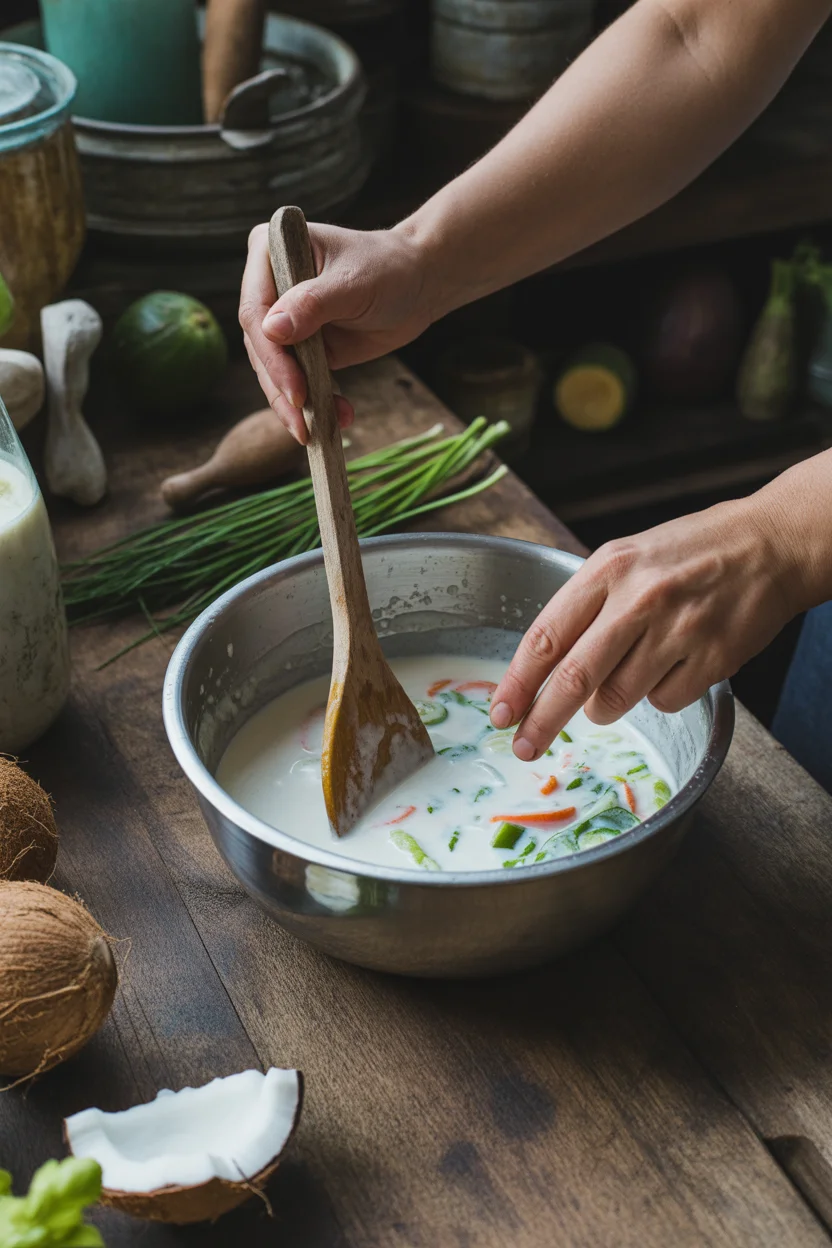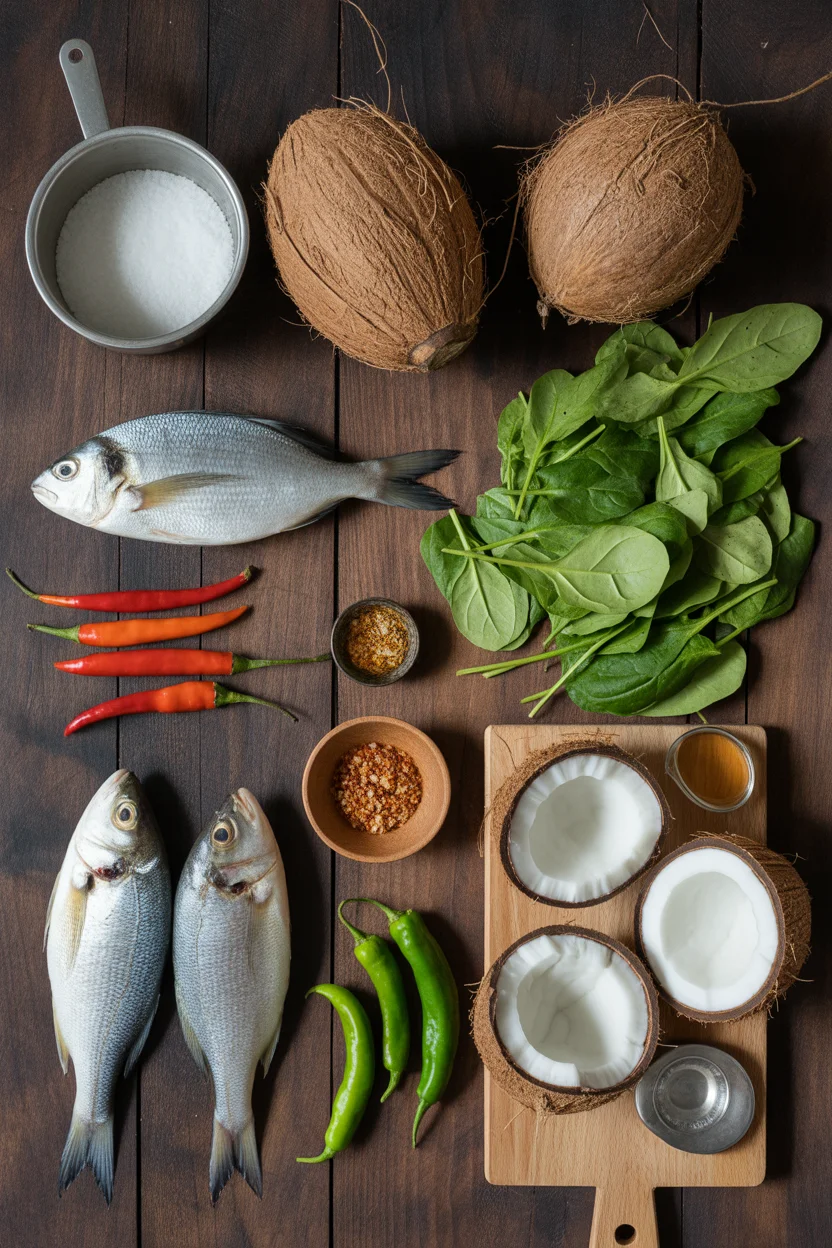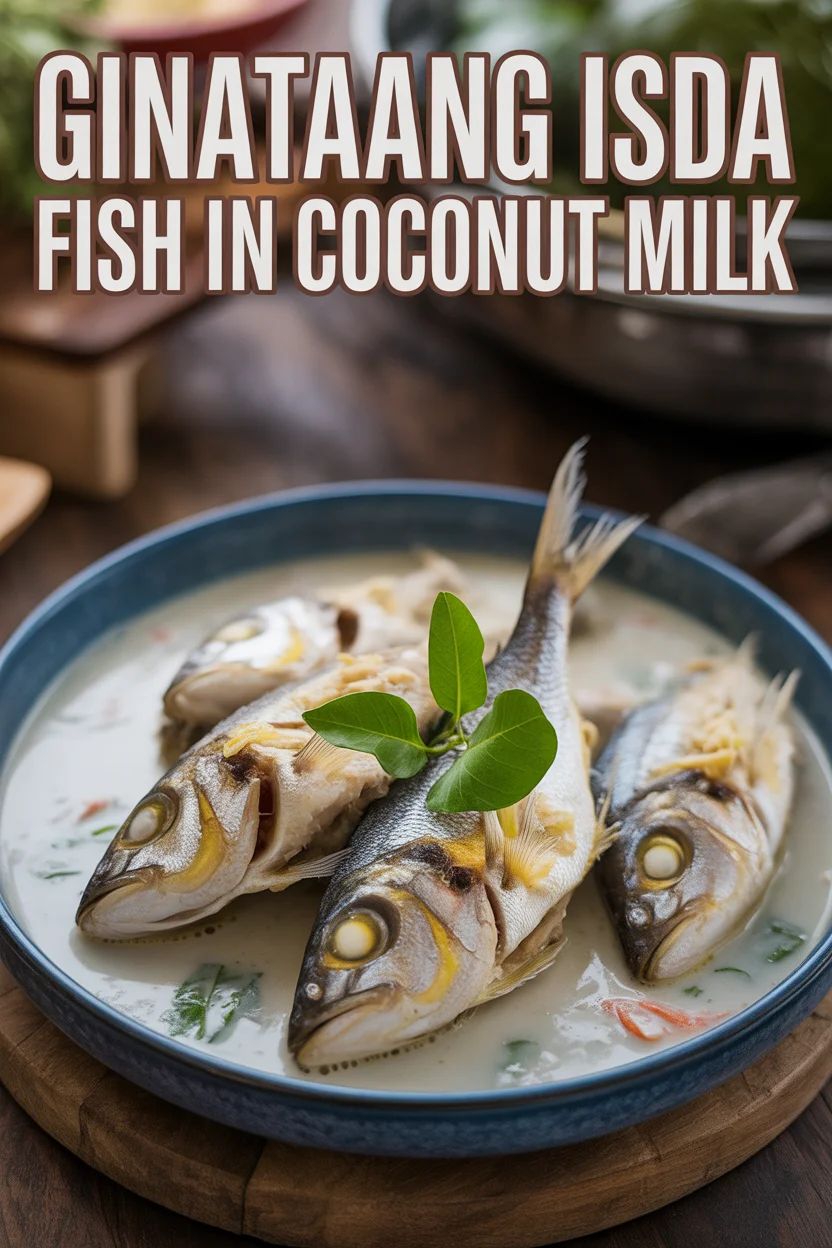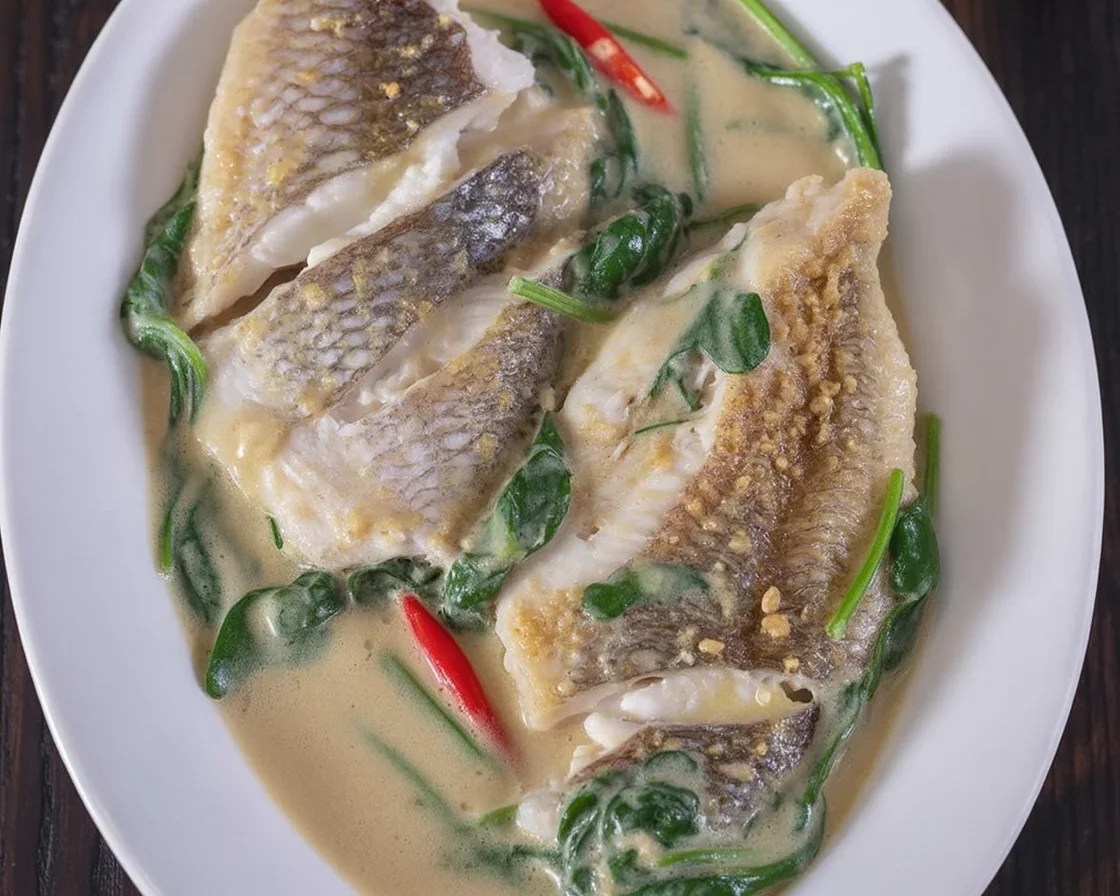Ever had those days when you’re just tired of the usual fried fish routine? Filipino ginataang isda is what I reach for when my taste buds start begging for something cozy but wildly different. Picture this: it’s raining, and you’re home (slippers on, no plans in sight), hunting for a comfort meal that’s not heavy or too rich. That’s what ginataang isda brings every single time. I’ve craved this dish more times than I’d ever admit in public. If you’re on the lookout for those other iconic Pinoy flavors, check my favorite tangy and saucy picks over at these 10 adobo variations and my personal go-to from the healthy Filipino recipes collection. But first, let’s get into this creamy fish magic. 
Overview of ginataang isda
Let’s just get it out there. Ginataang isda isn’t fancy. It’s not even trying. You won’t see it in a five-star restaurant (unless we storm in and demand it, honestly). The name says it all: “isda” means fish, and “ginataan” means cooked in coconut milk. That’s really it. But it’s addicting in a subtle way.
What I love about this dish? The coconut milk turns the ordinary fish into something silky and gentle, cuts any harsh flavors and brings out sweetness. Every Filipino family makes it their own way, but there’s a familiar hug in the taste. Sometimes there’s a little spicy kick from fresh chilis, or some ginger for zip, or leafy greens bobbing around (my grandma would sneak in malunggay when we weren’t looking). Really, all you need is a good fish, coconut milk, and a bit of bravery.
Filipino ginataang isda is the kind of food you make when you want dinner to do all the talking for you. 
Choosing fish
Okay, before you scatter off to the store, let’s talk about the right fish. Seriously, a lot can go wrong—speaking from embarrassing experience when my fish turned to mush (not fun).
For ginataang isda, you want fish that holds its shape but soaks up flavor. Tilapia is the obvious MVP; it’s affordable, everywhere, and totally reliable. Bangus (milkfish) is classic and crazy rich, but you do need to wrangle those bones. Mackerel or galunggong are awesome too.
Tips for picking:
- Try not to buy frozen if you can (but hey, if that’s all you’ve got, roll with it)
- Look for bright, clear eyes (trust me, cloudy is a no-go)
- Press the flesh gently. It should bounce back, not stay dented
Family pro-tip: If you ask three Pinoys which fish is best, you’ll hear three different answers—just pick what you like!
Preparing coconut milk
This part can get a little dramatic, because honestly, fresh coconut milk is magical. But let’s be real, who has time to press coconut every time you want ginataang isda? I cheat and use the canned kind when busy—don’t tell my aunties.
Here’s how you roll:
First, if you want to go full classic, buy grated coconut from an Asian or Filipino store and squeeze the milk out yourself with some warm water. Strain it well.
Or, just grab a can from the shelf. I go for the “full fat” label (the light stuff is watery, and for this dish, that’s just sad). Shake the can—sometimes everything settles.
I always taste before cooking, because sometimes coconut milk gets a bit sour in the can. If it tastes weird, switch cans. Trust your gut.
Fun fact: this is NOT the same as coconut water. Save that for sipping on a sunny beach, not for your ginataang isda.
Fresh or canned, don’t skimp on this. The coconut milk is what turns regular fish stew into a dreamy, creamy dinner.
Cooking fish gently
Now comes the bit where patience is your best friend. Look, I get it. We all wanna get dinner on the table quick. But if you rush this, you’ll end up with sad, broken fish and milky soup that looks like the inside of a washing machine. Yikes.
Slide your cleaned fish into the coconut milk gently—almost like tucking in a baby. Keep the heat on low or medium. Don’t let it boil like a volcano, just tiny bubbles around the edges. That’s key.
Let it cook, maybe ten to twenty minutes depending on the fish size. Flip once, carefully. Don’t keep fiddling or you’ll ruin the flakiness. Some people cover the pan, but I leave it open so things don’t get too soupy. The coconut cream will thicken slightly as it simmers, coating the fish without drowning it.
I’ve found that fussing too much just invites disaster. So, hands off. Go set the table or start thinking about dessert (like creamy maja blanca, oh yes). That way when you come back, you’ll have a dish that actually looks like ginataang isda and not some exploded science experiment.
A neighbor once told me, “The slower you simmer, the tastier the ginataang isda.” Honestly, she’s right. My fish always tastes better when I trust the process.
Adding vegetables
Here’s where you make it your own. I throw in whatever’s looking lively in my fridge—sometimes eggplant, other days a handful of pechay or spinach. Mustard greens make it rustic and… okay, a little bit fancy if you ask me.
Don’t add veggies too early or they’ll turn to mush real quick. Pechay or spinach goes last, right before serving. Eggplant or squash, give those a head start so they soften up nicely.
My biggest tip: Balance the colors (green and yellow, maybe some red chili). It just looks better—heard it’s good for you, too, but mostly I just want my dinner to look appetizing. And don’t be shy with chilies if you love heat. That little zing makes ginataang isda unexpectedly lively.
Seasoning
Let’s keep this part simple but honest. Step away from the fancy sauces for once—salt, pepper, and maybe a splash of fish sauce (patis) do most of the talking.
I sprinkle salt as soon as the coconut milk goes in, not too much, just enough to let it wake up the flavors. Pepper goes next, and a tiny bit of fish sauce at the end, if you’re feeling adventurous.
Some folks squeeze a bit of calamansi or lime over just before serving—gives the dish a bright finish. Totally optional but sometimes I do it just to be extra. Don’t overcomplicate things. Simple is perfect, really.
Serving with rice
Ginataang isda with rice is like peanut butter and jelly. One simply doesn’t go without the other. I always serve mine with a giant mound of steaming rice (sometimes garlic rice if I’m feeling diabolical, hello garlic sinangag).
Here are my go-to serving tricks:
- Use a deep bowl and pour extra coconut sauce over the rice.
- Add a side of sliced chilies or green mango if you crave tang.
- Leftovers taste even better the next day, trust me (breakfast of champions).
No joke, eating ginataang isda with rice is basically therapy for the soul.
Common Questions
1. Can I use frozen fish for ginataang isda?
Yes, you absolutely can. Thaw all the way first, though, or it’ll throw off the sauce texture. I do this sometimes when I’m just out of options.
2. Is it okay to skip the vegetables?
Of course! The classic version is just fish and coconut milk. Veggies perk it up but aren’t a deal breaker.
3. My coconut milk keeps curdling—help!
Keep the heat gentle and don’t boil hard. Once it’s in, low and slow is your motto.
4. Can I add shrimp or other seafood?
Oh yes, and honestly, your guests will probably love you for it. Just cook shrimp toward the end, since it gets rubbery super quick.
5. How long does it keep in the fridge?
Budget two to three days max. The coconut milk will thicken, so you might need a splash of water when reheating.
Comfort Food Doesn’t Get Creamier Than This
So, here’s my take: ginataang isda isn’t loud or flashy, but it sure knows how to soothe a rough day. Just a handful of fresh ingredients and a half-hour, and boom! You’ve got a dinner that ticks all the boxes. For a real treat, I love pairing it with something sweet like Filipino leche flan or go full classic with a comforting Filipino Tinola with Spinach. If you need more inspiration, watch a full step-by-step in this Ginataang Tilapia: A Creamy Filipino Delight – YouTube guide or get ideas from this Ginataang Isda Recipe | Basa Fish in Coconut Milk | Filipino Dish … video. Curious about twisty versions? Here’s a cool Ginataang Tilapia Recipe. Try ginataang isda soon—your kitchen (and your family) will thank you. 
Ginataang Isda
Ingredients
Fish and Coconut Milk
- 4 pieces Tilapia (or other suitable fish) Can also use Bangus or Mackerel.
- 1 can Coconut milk Use full-fat for best results.
Vegetables
- 1 cup Eggplant, chopped Add early for soft texture.
- 1 cup Pechay or Spinach Add last before serving.
- 1 piece Red chili Optional, for heat.
Seasoning
- 1 teaspoon Fish sauce (patis) Optional for additional flavor.
- to taste Salt Sprinkle into the coconut milk.
- to taste Black pepper Add after salt.
- 1 piece Calamansi or lime Optional, for a tangy finish.
Instructions
Preparation
- Choose fresh fish and prepare by cleaning thoroughly.
- If using fresh coconut, grate and squeeze the milk; otherwise, shake the can of coconut milk well.
Cooking
- In a large pot, gently slide the fish into the coconut milk over low to medium heat.
- Cook for 10 to 20 minutes, flipping the fish carefully to keep it intact.
- Add chopped eggplant and allow it to soften before adding pechay or spinach at the end.
- Season with salt, pepper, and fish sauce, stirring gently.
Serving
- Serve the ginataang isda hot, with a generous portion of rice on the side.
- Pour extra coconut sauce over the rice and add sliced chilies or green mango if desired.

